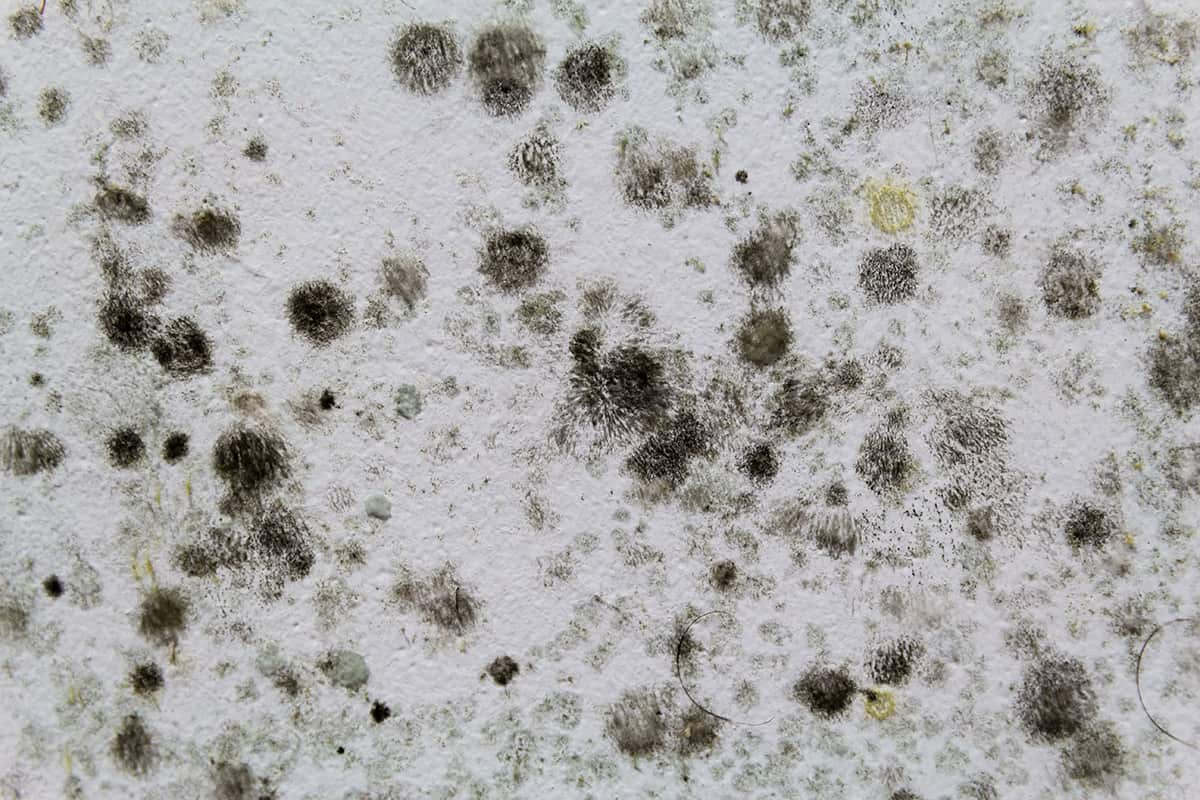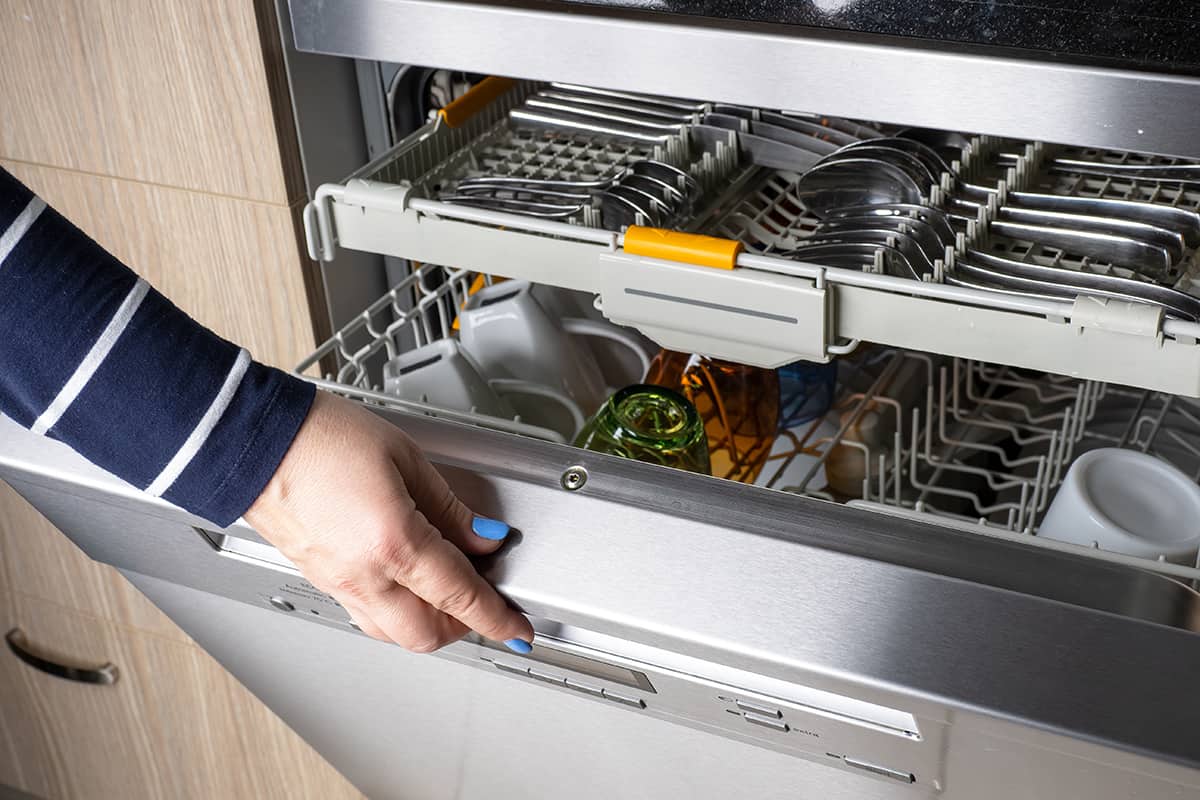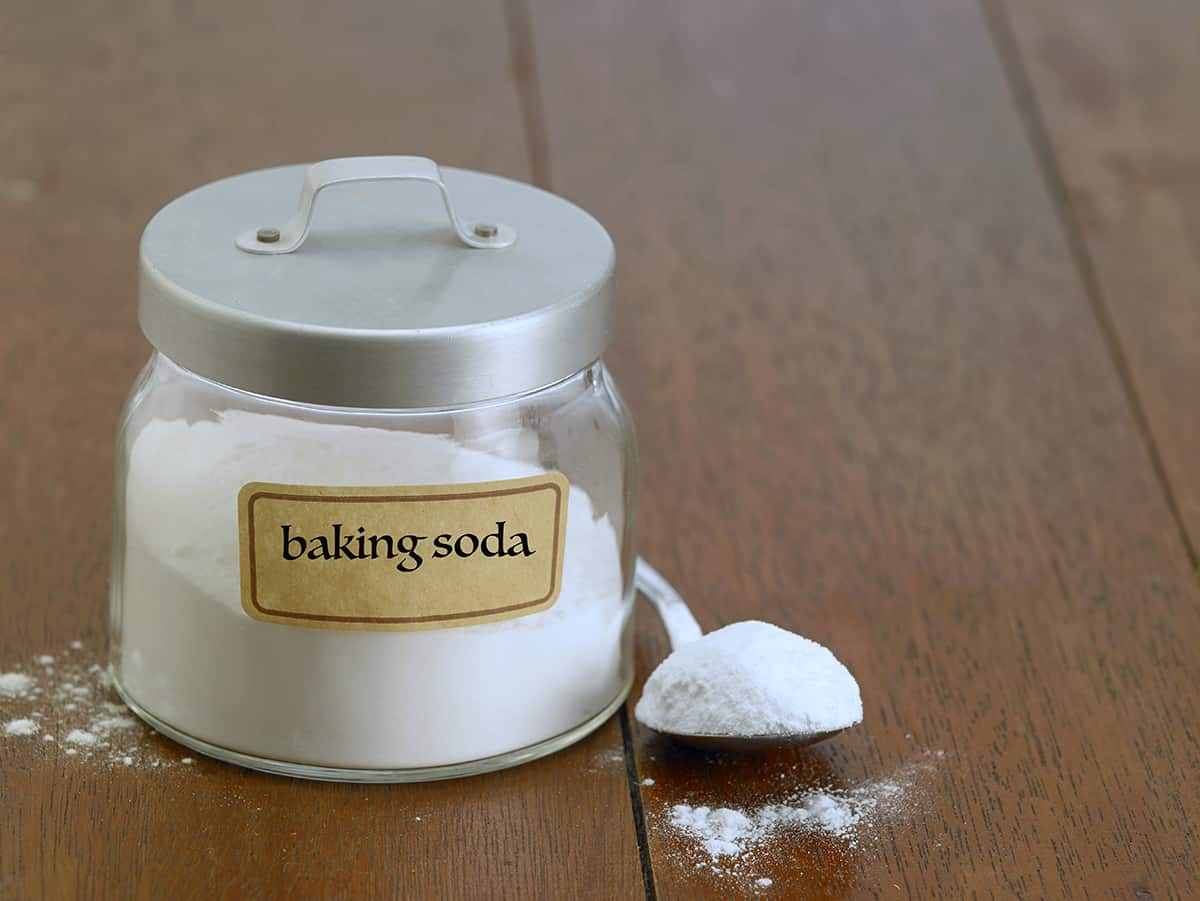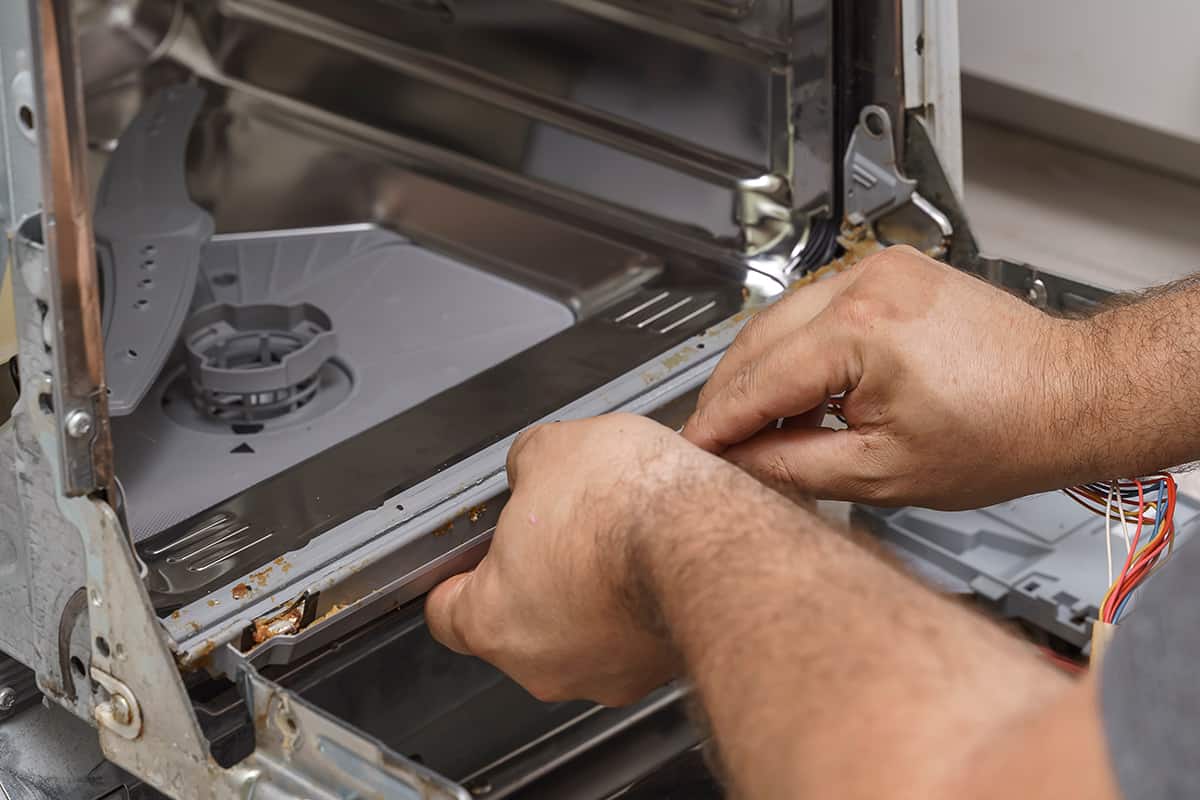It goes without saying that your dishwasher requires water to operate. However, the water that goes into your dishwasher may do more than just wash and sanitize your dishes. If you’re not careful, mold can grow inside the dishwasher tub and take over the machine. So, how do you prevent such a frightening thing from happening?
To prevent mold from growing in and around your dishwasher, you should:
- Clean the door gasket
- Empty and wash the filter assembly
- Remove blockages in the vent port
- Open the dishwasher door to vent steam and heat after each cycle
Below, I’ll explain how to tell whether mold has invaded your dishwasher, how to prevent mold growth in a dishwasher by implementing the methods above, as well as what you can do to combat mold attacks inside a dishwasher.
How Does Mold Grow in a Dishwasher?

Rough estimates show that up to 50% of homes and commercial buildings in the US are infected by mold, regardless of whether the occupants are aware of the situation. That’s quite a large number, but what might surprise you is that basements, garages, bathrooms, and living rooms aren’t the only places you can find mold growth.
The most impactful factors that contribute to mold growth are temperature, moisture, and exposure time. Mold thrives in humid environments between 60 and 80°F, and if you do nothing to treat the spores, you’ll only have more of the mold to deal with in the future. One of the last places you may think to check for mold is your dishwasher.
All of the factors mentioned above perfectly spell out “dishwasher.” Without proper maintenance, which hardly anyone ever does, you may have microscopic inhabitants taking over the appliance that’s in charge of keeping your dishware and cookware clean and sanitized. Yuck.
How to Prevent Mold in a Dishwasher?
Prevention is the best medicine when it comes to combatting mold. Getting rid of developed mold spores in a dishwasher can be tricky, but if you do the following things, you’ll never have to see those dirty and disgusting green or black spots inside of the machine.
Below, I’ll explain various methods for preventing mold growth in a dishwasher.
1. Clean the door gasket

The door gasket is the plastic, rubber, or silicone seal found along the perimeter of the dishwasher door. Its primary job is to create a tight and secure seal along the door to prevent water from leaking out of the machine. As such, the gasket is continuously exposed to water and old food remnants, but the dishwasher spraying arms are not specifically designed to spray-clean the gasket.
It’s possible for mold spores to develop along the gasket and eventually spread to the dishracks and tub. You can prevent this from happening by periodically wiping down and cleaning the gasket. Here’s how you do it.
- Shut off the dishwasher and open the door.
- Take a dry rag and wipe down the gasket, making sure to get the rag deep inside the gasket’s folds.
- Soak a clean rag in soapy water and wipe down the gasket for a second time.
- Finally, take a clean rag and wipe away the soapy residue from the gasket.
- Allow the gasket to dry before shutting the door.
While you’re wiping down and cleaning the gasket, you might as well clean the inner perimeter of the dishwasher door (where the gasket makes contact with the door). If the gasket is attached to the door, then wipe down whatever surface on the dishwasher that the gasket touches.
2. Empty and wash the filter assembly
The filter assembly is comprised of at least 2 components—a cylindrical filter with an ultra-fine screen, and the main filter with a fine screen. Together, the filters trap solid debris from clogging up the sump hole, drain line, and garbage disposal.
Although you’re not supposed to pre-rinse your dishes before putting them in a dishwasher, you’re supposed to scrape off the largest bits of food residue to prevent them from clogging the filter assembly. Many of us tend to forget to do this, which can cause a buildup of gunk and grossness in the filter.
The solid food particles that reside in the filter don’t just potentially cause your dishwasher to leak or smell, but it becomes the perfect breeding ground for bacteria and mold. Do yourself a favor by emptying and washing the filter. Here’s how you do it:
- Shut off the dishwasher and unload the bottom dishrack.
- Pull the bottom dishrack out to expose the filter assembly.
- Remove the filter assembly and toss the trapped food particles in the garbage.
- Dunk the filter assembly in a basin or sink of soapy water and let them sit for 5 to 10 minutes.
- Take a soft-bristle scrub brush and carefully remove the leftover debris clinging onto the mesh screens.
- Rinse the filter assembly before putting the parts back together and reinstalling them in your dishwasher.
Not many people are aware that you can empty out the filter assembly, but you can and you should. On average, you will need to empty the filter assembly once every week or so. Ideally, you’ll do it after each dishwasher wash cycle.
3. Remove blockages in the vent port
Dishwashers have built-in vent ports somewhere on the back or side. These ports allow heated air, steam, and humidity to escape the machine, leaving your dishes as dry as a bone after going through a dry cycle. However, if your dishwasher was installed too close to a wall or the side wall of a cabinet, then the vents may be blocked, and the moisture will have nowhere to go.
You’ll typically notice if the vent port is blocked if your dishes do not turn out dry after a completed wash cycle. Also, you may notice droplets of water underneath the dishwasher door. In any case, you may need to relocate your dishwasher to unblock the vent, or there might be something trapped in there that you need to get rid of manually.
4. Open the dishwasher door to vent steam and heat after each cycle
Some of the latest and greatest dishwasher models are programmed to release the door’s latch mechanism after a complete wash cycle. That way, the steam and heat inside the dishwasher can escape into the open air of your kitchen to improve the drying process. However, this feature isn’t available in every dishwasher, so you may have to open the dishwasher door manually.
When doing this, make sure the dishwasher has completed the wash cycle and that the door latch is undone. Trying to force the door open can lead to a broken door latch or microswitch, and you may have to replace the defective parts.
By releasing steam into the kitchen, moisture has less of a chance of staying inside your dishwasher and contributing to mold growth. Ideally, you’ll have a range hood somewhere in your kitchen to suction the steam, or you can open a window and vent the steam the old-fashioned way.
You don’t need to open the dishwasher door all the way. Simply pull it open until it can stay open on its own. After all the steam has left the dishwasher, and your dishes are dry, you can unload the dishracks.
How to Get Rid of Mold from a Dishwasher
The methods described above will help you prevent mold from taking over your dishwasher. However, what should you do when mold has already set up basecamp inside the moist environment of the machine? Luckily, the solution is pretty simple.
The only things you need are some vinegar and a dishwasher-safe bowl. Vinegar can be used to tackle all sorts of mold types, as well as certain bacteria, fungi, and other disgusting microorganisms.
Here’s how you can use vinegar to kill mold inside your dishwasher:
Cleaning the gasket:
- Shut off the dishwasher, unload the dishracks, and open the dishwasher door.
- Moisten a rag with vinegar and wipe down the gasket and its folds.
- Let the vinegar sit for 5 to 10 minutes before wiping it down with another rag saturated in vinegar. Do this as many times as you want.
- Moisten a rag with clean water and wipe down the gasket.
Cleaning the inside of the dishwasher:
- Pour 1 to 2 cups of vinegar into a dishwasher-safe bowl.
- Place the bowl on the bottom dishrack.
- Shut the dishwasher door and start a regular wash cycle.
- Wait until the wash cycle is complete.
Does Baking Soda Kill Mold?

The short answer to this question is, yes, baking soda can kill mold. But should you use baking soda? Again, the answer is yes if you don’t want to introduce harmful chemicals to the inside of your dishwasher.
Baking soda, which is acidic, can interrupt the pH levels inside your dishwasher, creating an uninhabitable environment for mold and other microorganisms. Here’s how you can use baking soda to get rid of mold inside your dishwasher:
- Create a baking soda slurry by combining 1 cup water with 1 cup baking soda.
- Smear the gasket and the inside of the dishwasher with the baking soda slurry.
- Let the slurry sit for 10 to 20 minutes.
- Wipe away the slurry with a moistened rag.
- Run a regular wash cycle.
Make sure to rinse the baking soda slurry away before applying another layer of slurry to the inside of your dishwasher.






